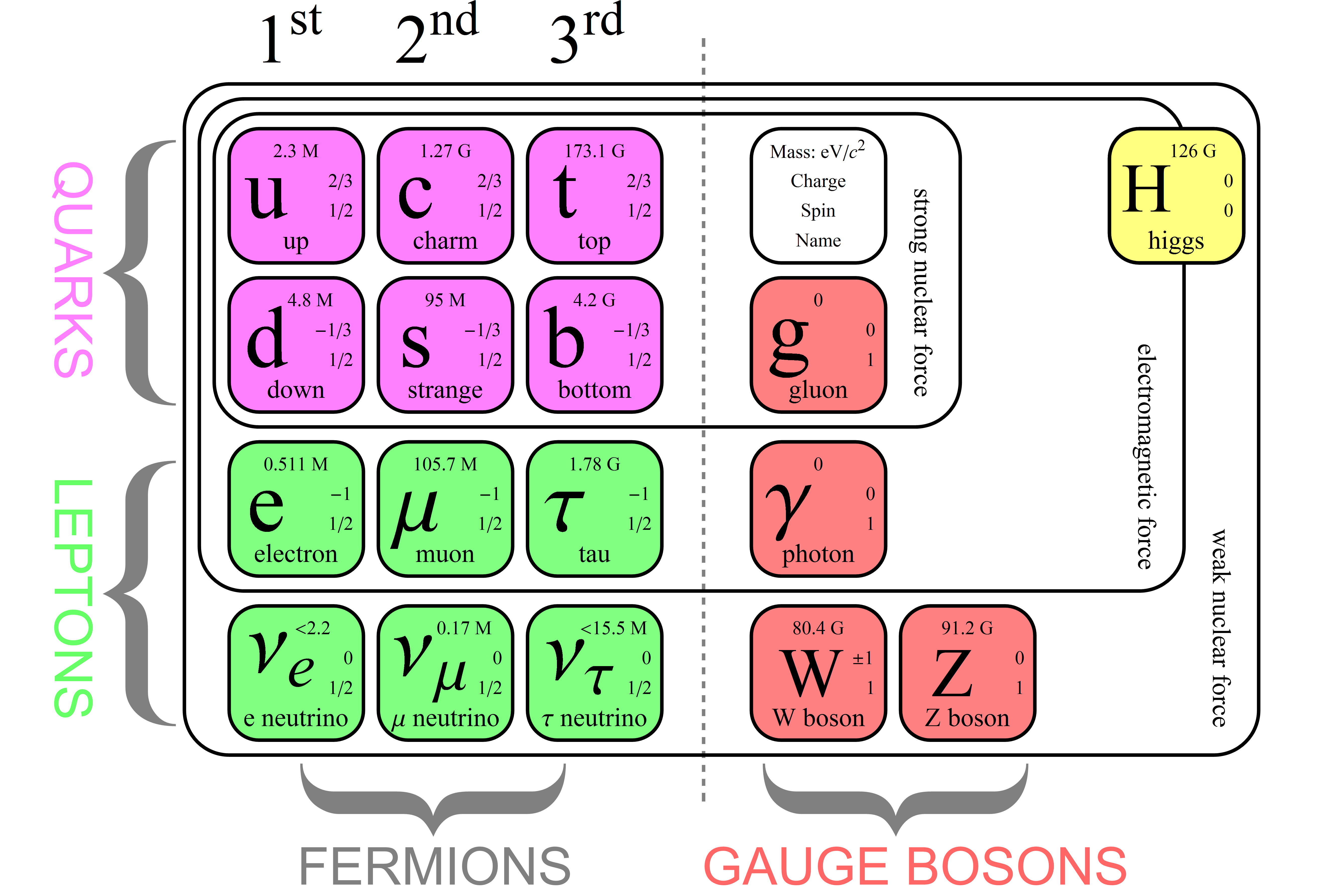The Standard Model of particle physics describes all known microscopic phenomena with great precision and it is considered one of the biggest scientific achievements of the last century. The Standard Model consists of matter particles (with spin 1/2), gauge bosons (with spin 1) and the Higgs boson (with spin 0). The gauge bosons are associated to the three forces (electromagnetic, strong and weak) which are responsible for particle interactions. In addition, all matter particles have a corresponding anti-particle with opposite charge. For instance, the antiparticle of the electron is the positron.

Matter particles consist of quarks and leptons. The main difference between quarks and leptons is that quarks experience the strong force while leptons do not. This force is such that quarks cannot be found as free particles, but they are bound together to form particles called hadrons (like the proton and the neutron). There are two types of leptons: charged ones (like the electron) and neutral ones called neutrinos. Both quarks and leptons are found in three families, the difference between the families is the mass of the particles belonging to each family. The muon, for instance, is a heavier replica of the electron, with exactly the same interactions.
We know that the Standard Model cannot be the full story. The main evidences of the existence of physics beyond the Standard Model (often called New Physics) are: the existence of Dark Matter, the matter-antimatter asymmetry in our Universe and neutrino masses and oscillations. New Physics theories predict the existence of new particles that would have played a key role in the high-energy phase of the early Universe.
Image by Matic Lubej
